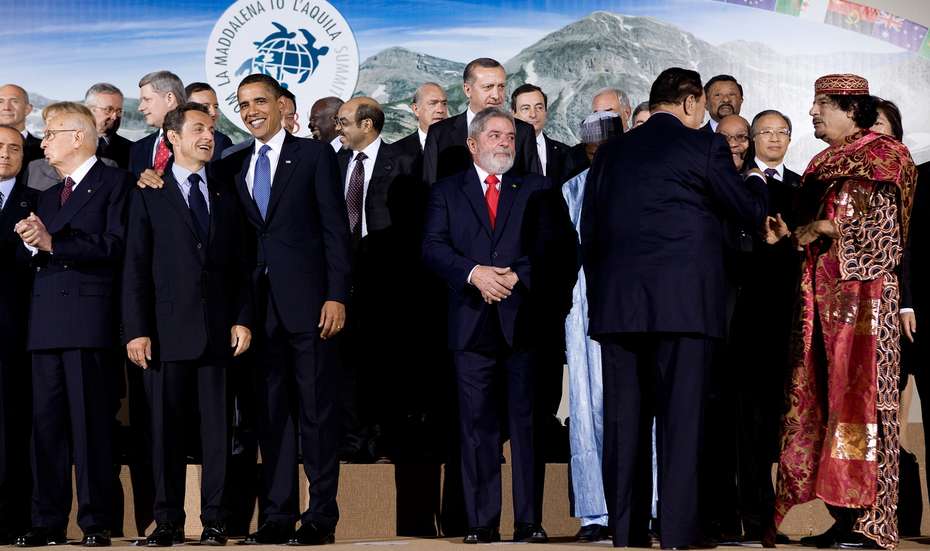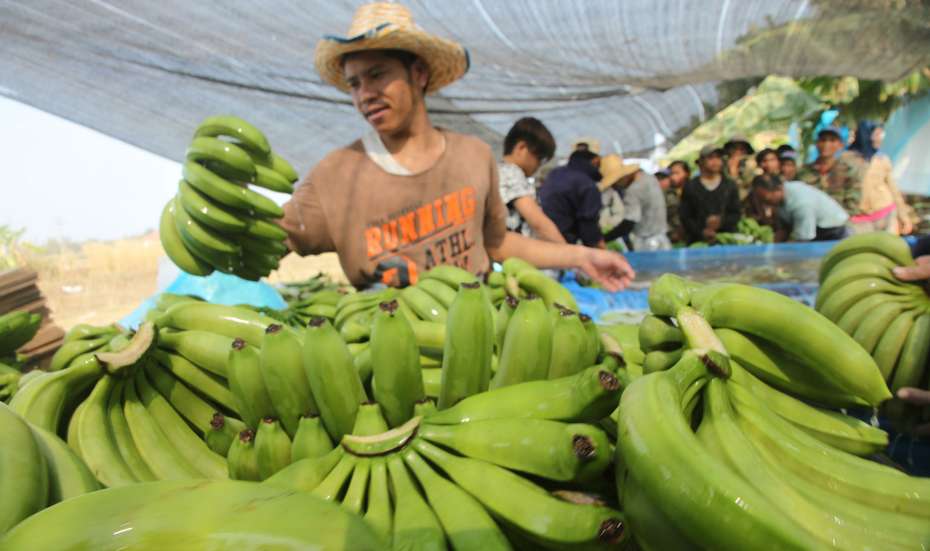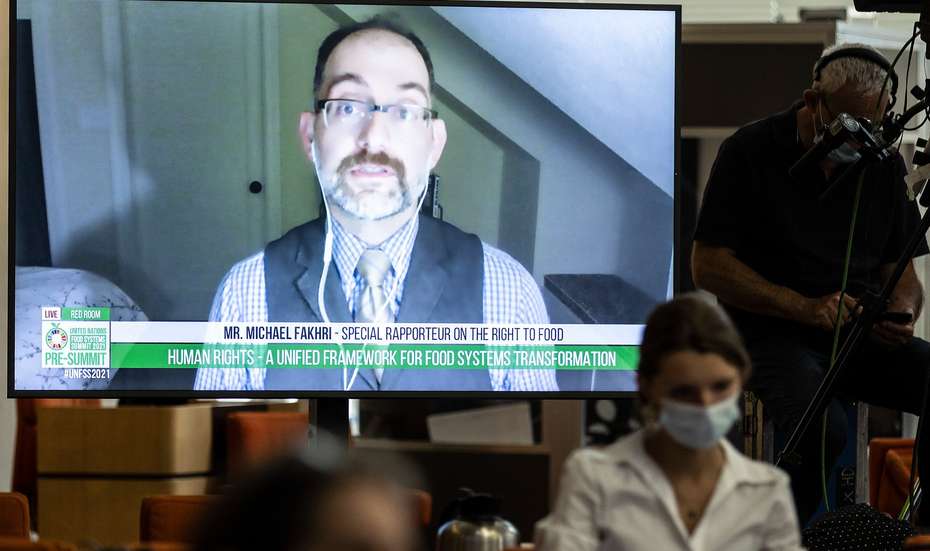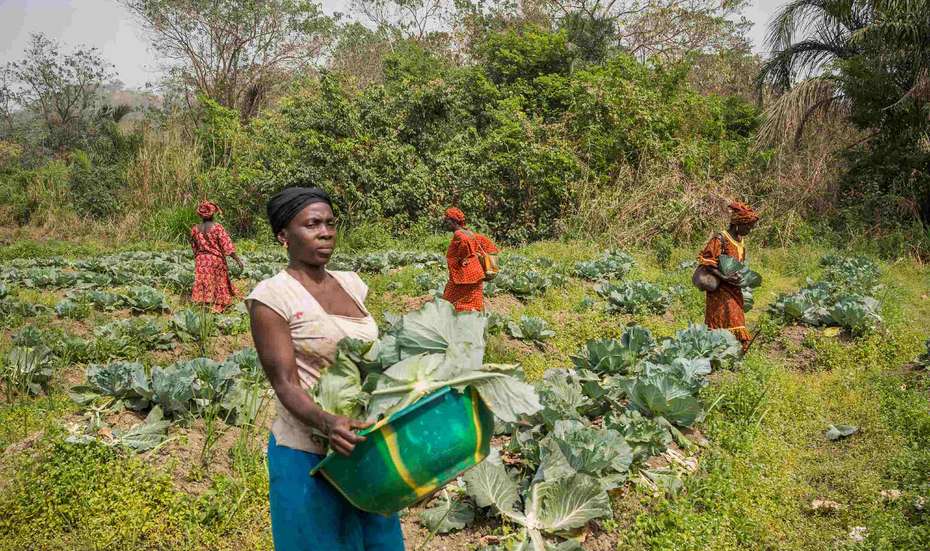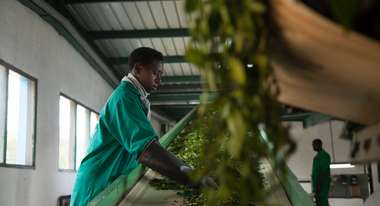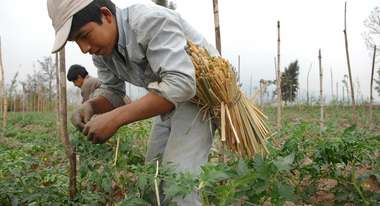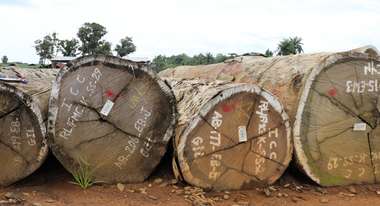Renegotiating control in global food governance
Struggles for control over agriculture and food systems are entering a new phase. How to democratize decision making?
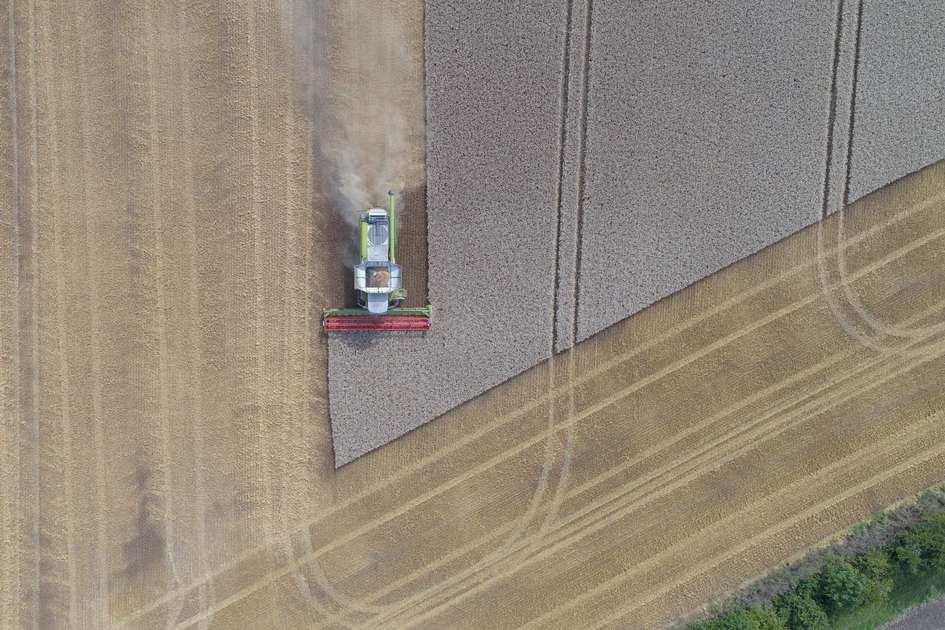
How food is produced, distributed and consumed shapes the foundations of society. Policymaking exposes tensions between competing world-visions: from corporate-led mechanisms for harnessing capital, technology and market links, to approaches that centre the human rights of small-scale producers, workers and consumers. Power and legal imbalances tend to favour agroindustry, affecting value chain relations and leverage in public decisions; but agrarian movements have challenged prevailing arrangements and charted alternative pathways.
In these contexts, renegotiating control – that is, who has what influence over what in agrifood systems – has become an arena for struggle, and the ability of global governance arrangements to democratise control has become a testing ground for their effectiveness. At stake are not just modes of production and trade but also livelihoods, nutrition, the environment, culture, identity and resilience to climate change. Addressing these issues requires us to interrogate the arrangements that coordinate economic activities – from property to contract – as well as the international bodies that facilitate dialogue and catalyse public action.
Anatomy of food governance
Much debate about global food governance focuses on multilateral institutions tasked with addressing issues of hunger and food insecurity. Milestones in established genealogies include the creation, in 1945, of the Food and Agriculture Organization of the United Nations (FAO); the 1974 World Food Conference; and the 2009 reform of the Committee on World Food Security (CFS), set up in 1974. Each of these milestones was a response to a food crisis (McKeon 2021). The 2007-08 food price spike also prompted international initiatives such as the 2008 L’Aquila Food Security Initiative, the New Alliance for Food Security and Nutrition, launched in 2012, and a range of other institutionalised processes (see also Margulis 2013).
Over the years, this ‘crisis diplomacy’ has created international mechanisms for dialogue and response. The CFS provides a space for states to debate issues and develop policy guidance, with participation from social movements, agroindustry, international organisations, philanthropic foundations and research institutions, and with operational programmes supporting uptake and implementation. But to really understand the everyday realities of food governance, we must explore the fundamentals of economic organisation: from agricultural trade rules, such as national legislation, regional treaties and the rules of the World Trade Organization (WTO), to policies on finance, land, competition, innovation, intellectual property, investment and infrastructure.
Though situations vary, these arrangements tend to place significant control in the hands of agroindustry, directly or indirectly. Such policy emphasis mirrors, and facilitates, growing concentration of market power in agrifood systems (IPES Food 2017). Market power enables agroindustry to influence not just trading terms but also technological innovation patterns, applicable standards and policy reforms (Clapp 2021). To a significant extent, then, food governance operates through private-sector arrangements, albeit underpinned by public policies and institutions (see also Tan 2020).
Control through property and contract
The legal arrangements that make it possible for agroindustry to exert control vary. But as the UN Special Rapporteur on the Right to Food, Michael Fakhri, pointed out in a report to the United Nations General Assembly, two concepts stand out: property and contract (Fakhri 2021). Broadly speaking, property involves direct control over assets – from land, seeds and equipment to funds, technology, brands and company shares. Rights and protections hinge not just on national laws, such as those governing land ownership, intellectual property and corporate structures, but on international law as well.
For example, international treaties protect intellectual property concerning new plant varieties, patented agrochemicals or corporate trademarks (Adebola 2021); and investment treaties can protect agroindustry against measures such as farmland redistribution or public regulations that, in promoting healthy diets, reduce corporate earnings.
Meanwhile, networks of contracts shape and codify relations in agricultural production and trade. Besides setting the terms of exchange, contracts are a source of private regulation: in longer-term relationships, they often govern farming techniques, technology and product specifications (Cafaggi and Iamiceli 2014).
Big brands and retailers typically set contract terms in global value chains, cascading those terms onto first-tier suppliers and their subcontractors (Cotula et al. 2021). While farmers may hold the land, the contracts often regulate farming activities and restrict land use options in practice (see also Oliveira et al. 2020).
Property and contractual arrangements perform economic functions and involve distributive dimensions. Contracts enable value chain actors to coordinate activities, but they also affect the distribution of benefits, costs and risks – both material ones, such as via pricing mechanisms, and in terms of influence in the value chain and beyond. As legal scholar Celine Tan noted, the outcomes can displace traditional forms of regulation in favour of business-to-business negotiations dominated by lead firms and subtracted from public scrutiny and participation (Tan 2020).
Reclaiming control: the place of human rights
Since the 1990s, international agrarian movements and civil society organisations have mobilised the language of human rights to challenge corporate control of food and agriculture, and to advance ‘from below’ alternative visions of agrarian reform and locally controlled agrifood systems.
Human rights concepts have permeated multilateral food diplomacy since the 1960s (Fakhri 2019). The Universal Declaration on the Eradication of Hunger and Malnutrition, adopted at the 1974 World Food Conference, affirmed ‘the inalienable right to be free from hunger and malnutrition’; while the 1996 Rome Declaration on World Food Security reaffirmed ‘the right of everyone to have access to safe and nutritious food’.
But broad pronouncements mask diverging approaches to implementing the right to food. Adopted just as WTO rules liberalised trade in agriculture, the 1996 Rome Declaration identified international trade as a key element in achieving food security (see also Fakhri 2019).
On the other hand, agrarian movements and civil society have reconfigured human rights concepts to advance and defend the right to produce food (Claeys 2018), and to challenge prevailing forms of agricultural production and trade – placing greater emphasis on small-scale producers’ control over the means of production, on shorter value chains that link producers directly to consumers, and on ‘territorial markets’ whereby food production, processing, trading and consumption are embedded within a given geographic and sociocultural territory (CSM 2016).
In this approach, human rights are in direct tension with arrangements that locate control with agroindustry. Making rights real, then, would require sustained action to restructure agrifood systems as regards both property and contract. This may include agrarian reforms; competition measures that tackle corporate concentration and oligopolistic practices in agricultural contracting chains; and policies, infrastructure and legal innovation supporting territorially embedded production and trade.
The role of global fora
Multilateral governance institutions can provide spaces for diverse actors to discuss competing visions of agrifood systems. They can also develop international guidance to steer, coordinate and oversee concrete policy action. For example, in 2012, the CFS endorsed the Voluntary Guidelines on the Responsible Governance of Tenure (VGGT), following negotiation among states and public consultation. In themselves, voluntary guidelines cannot alter ownership structures based on binding national and international law. But national measures implementing the VGGT can affect control over land, including through redistribution, restitution or increased tenure security.
Much depends, however, on who has what say in these processes, how competing visions are reconciled and what arrangements can ensure effective follow-up. Global food summitry since the 1990s has seen greater participation by non-state actors, including social movements and agroindustry (Canfield et al. 2021). This can enable more inclusive and effective dialogue. But it also raises fundamental questions about how participants are identified and prioritised, whose voices are heard, and how to redress power imbalances, particularly between big business and small-scale producers (Claeys and Duncan 2021).
Approaches to these questions differ. The reformed CFS includes institutionalised mechanisms for channelling inputs from social movements and agroindustry. Its operation has come under scrutiny, with social movements critiquing states’ prioritising economic interests over support for human rights, as well as the process and outcome of certain CFS normative instruments (Guttal 2021). As in all international fora, power relations are part of life, and states have often been reluctant to discuss issues that could truly shift control. There are also questions about whether soft guidance can ever change the legal and political economy factors that shape agrifood systems.
Even so, the CFS exemplifies an attempt to regulate and structure the participation of different actors in international policy making and to provide, insofar as possible, a level playing field among actors with uneven negotiating power, while ultimately emphasising the accountability of states. This approach contrasts with the looser ‘coalitions of the willing’ that often characterise contemporary multistakeholderism, which tend to provide fewer safeguards, to blur roles and lines of accountability, and ultimately to involve shifts towards greater corporate influence (see also Canfield et al. 2021; Fakhri 2021; Türkelli 2021).
The lively debates surrounding the United Nations Food Systems Summit of 2021 illustrated how divides between competing visions of food and agriculture are also reflected in divergent approaches to global governance, with varying emphasis placed on public participation, rebalancing power and legitimacy of process (for an overview of these debates, see Cotula 2021).
Renegotiating control in agrifood systems hinges on reconsidering the property and contractual arrangements that govern agricultural production and trade, while also enhancing mechanisms for those most affected to participate in international policy fora. Continued advocacy by agrarian movements and civil society is essential for mobilising evidence, shifting narratives, confronting vested interests and pioneering new approaches. But change ultimately requires action by states, including to strengthen small-scale producers’ rights, regulate agrifood systems, and create a level playing field in decision-making processes.
I am grateful to Priscilla Claeys and Emily Polack for their helpful comments; views and errors are mine.

References:
Adebola. T., 2021, ‘Intellectual property rights’, in Koen De Feyter, Gamze Erdem Türkelli and Stéphanie de Moerloose (eds), Encyclopedia of Law and Development (Edward Elgar), pp. 139–142.
Cafaggi, F., and Iamiceli, P., 2012, ‘Supply chains, contractual governance and certification regimes’, 37 European Journal of Law and Economics 131–173.
Canfield, M., Anderson, M.D., and McMichael, P., 2021, ‘UN Food Systems Summit 2021: Dismantling democracy and resetting corporate control of food systems’, Frontiers in Sustainable Food Systems, https://www.frontiersin.org/articles/10.3389/fsufs.2021.661552/full.
Claeys, P., 2018, ‘The rise of new rights for peasants: From reliance on NGO intermediaries to direct representation’ 9(3-4) Transnational Legal Theory 386–399.Claeys, P., and Duncan, J., 2019, ‘Food sovereignty and convergence spaces’, 75 Political Geography 1–13.
Claeys, P., and Duncan, J., 2021, ‘Power to the elites? Multistakeholderism and the UN Food Systems Summit’, Agroecology Now!, 16 July, https://www.agroecologynow.com/unfss-multistakeholderism/.
Clapp, J., 2021, ‘The problem with growing corporate concentration and power in the global food system’, 2 Nature Food 404–408, https://www.nature.com/articles/s43016-021-00297-7.
Cotula, L., 2021, Food Systems Summit: Implications for global food governance, IIED blog (30 September), https://www.iied.org/food-systems-summit-implications-for-global-food-governance.
Cotula, L., Blackmore, E., and Berger, T., 2021, Contracts in Commercial Agriculture: Enhancing Rural Producer Agency, International Institute for Environment and Development (IIED), https://pubs.iied.org/12613iied.
CSM, 2016, Connecting smallholders to markets: An analytical guide, Civil Society Mechanism / Terra Nuova, https://www.csm4cfs.org/wp-content/uploads/2016/10/ENG-ConnectingSmallholdersToMarkets_web.pdf.
Fakhri, M., 2019, ‘The international political economy of the right to food’, https://www.academia.edu/40614188/The_International_Political_Economy_of_the_Right_to_Food.
Fakhri, M., 2021, Interim report of the Special Rapporteur on the right to food, Michael Fakhri, UN Doc. A/76/237, 27 July 2021, https://undocs.org/A/76/237.
Guttal, S., 2021, ‘Re-imagining the UN Committee on World Food Security’, 64 Development 227–235.
IPES Food (2017) Too big to feed: Exploring the impacts of mega-mergers, consolidation and concentration of power in the agri-food sector, International Panel of Experts on Sustainable Food Systems, https://ipes-food.org/_img/upload/files/Concentration_FullReport.pdf.
Margulis, M.E., 2013, ‘The regime complex for food security: Implications for the global hunger challenge’, 19 Global Governance 53–67.
McKeon, N., 2021, ‘Global food governance’, 64 Development 48–55.
Oliveira, G.L.T., McKay, B.M., and Liu, J., 2020, ‘Beyond land grabs: new insights on land struggles and global agrarian change’, 18(3) Globalizations 321–338.
Tan, C., 2020, ‘The law of global value chains as transmission nodes for global inequality’, Afronomicslaw blog (13 November), https://tinyurl.com/y25qgz7q.
Türkelli, G.E., 2021, ‘Multistakeholderism’, in Koen De Feyter, Gamze Erdem Türkelli and Stéphanie de Moerloose (eds), Encyclopedia of Law and Development (Edward Elgar), pp. 202–206.
